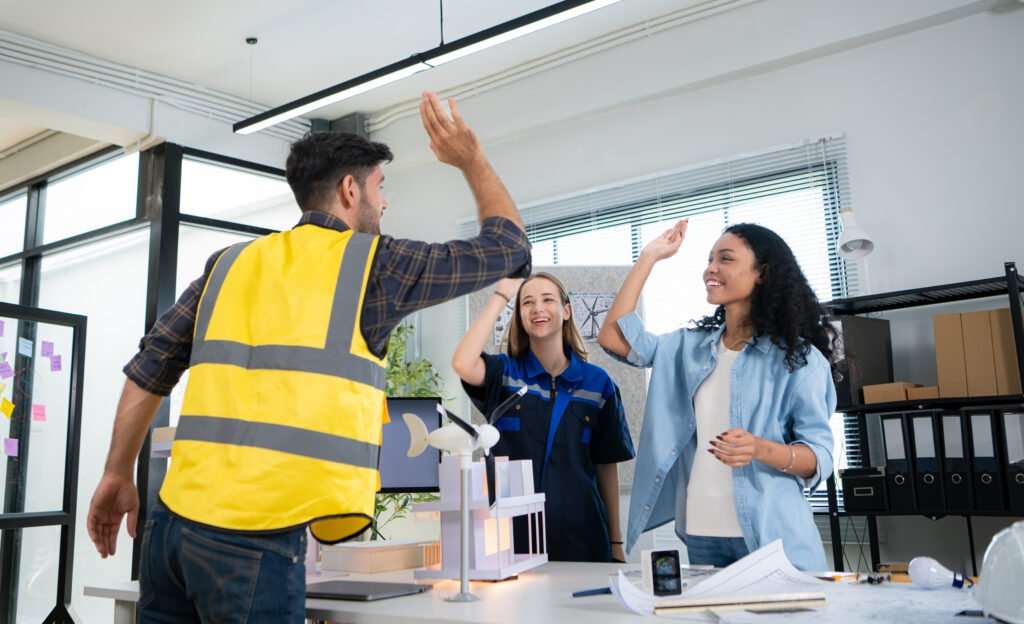Workplace safety is an essential concern for both employees and employers. Regardless of the industry, creating a secure and healthy work environment is crucial for productivity, morale, and overall well-being. While many workplaces prioritize physical safety through policies and protocols, recognizing and addressing potential threats proactively can make a significant difference in preventing accidents, conflicts, and even emergencies. In this article, we’ll explore strategies to identify risks and ensure safety for everyone in a professional setting.

The first step to workplace safety is fostering a culture of awareness. Employees should be encouraged to stay alert and mindful of their surroundings at all times. This involves paying attention to physical hazards like wet floors, unsecured cables, or poorly maintained equipment. It also includes observing behavioral cues from coworkers or visitors that may indicate stress, aggression, or unusual behavior. Early recognition of risks often provides the opportunity to intervene before an incident occurs.
Clear communication is another vital aspect of workplace safety. Employers must establish open channels for reporting concerns without fear of retaliation. Employees should feel comfortable discussing hazards, conflicts, or suspicious activities with supervisors or designated safety officers. Regular meetings or feedback sessions can help identify recurring issues and implement timely solutions. When employees are confident that their voices are heard, they are more likely to contribute to a safer work environment.
Comprehensive training programs are crucial for equipping employees with the knowledge and skills needed to maintain safety. This includes educating staff on workplace policies, emergency procedures, and the proper use of equipment. For example, employees who work with heavy machinery should be trained to operate it safely, while office workers might benefit from ergonomic training to prevent repetitive strain injuries. Safety drills, such as fire or evacuation drills, should also be conducted regularly to ensure everyone knows what to do in an emergency.
Addressing workplace violence is a critical component of overall safety. Violence can take many forms, from verbal threats and harassment to physical altercations. Employers should implement a zero-tolerance policy toward workplace violence and ensure all employees are aware of it. Conflict resolution training can help employees manage disagreements constructively and prevent escalation. Supervisors and managers should also be trained to recognize signs of tension and intervene appropriately.
Another key area of focus is cybersecurity, which has become increasingly important in today’s digital workplaces. Employees should be educated on recognizing phishing scams, safeguarding sensitive information, and using secure passwords. Regular software updates and the implementation of firewalls can help protect the organization from cyber threats. Cybersecurity awareness is especially important for remote workers, who may be more vulnerable to attacks when working outside the company’s network.
Physical security measures play an essential role in preventing unauthorized access and protecting employees. Employers should invest in systems like keycard access, surveillance cameras, and security personnel to monitor the premises. Reception areas should be well-staffed, and visitors should be required to sign in and wear identification badges. For workplaces with sensitive information or valuable equipment, additional measures like locked cabinets and restricted access zones may be necessary.
Health and wellness initiatives can also contribute to workplace safety by reducing stress and promoting overall well-being. Providing employees with access to mental health resources, such as counseling or stress management workshops, can help them cope with challenges both at work and in their personal lives. Encouraging physical activity, offering ergonomic furniture, and ensuring proper ventilation and lighting are additional ways to create a healthier work environment.
Emergency preparedness is another essential aspect of workplace safety. Employers should develop and communicate clear plans for various scenarios, including fires, natural disasters, medical emergencies, and active shooter situations. These plans should include designated roles for employees, evacuation routes, and assembly points. First aid kits and automated external defibrillators (AEDs) should be easily accessible, and employees should know how to use them.
Regular inspections and maintenance are necessary to identify and address potential hazards in the workplace. This includes checking fire extinguishers, ensuring that exits are not obstructed, and inspecting equipment for wear and tear. Employers should also conduct risk assessments to evaluate the likelihood and impact of various threats, from slips and falls to data breaches. By addressing these risks proactively, organizations can minimize the potential for accidents or disruptions.
Collaboration between employees and management is key to achieving workplace safety. Employers should encourage teamwork and involve staff in safety initiatives, such as forming a safety committee or gathering input for new policies. When employees feel invested in creating a secure work environment, they are more likely to follow protocols and promote a culture of safety among their peers.
Workplace safety is an ongoing effort that requires vigilance, training, and collaboration. By recognizing potential threats, fostering open communication, and implementing effective policies and practices, employers and employees can work together to create a secure and productive environment. Whether addressing physical hazards, behavioral concerns, or digital vulnerabilities, a proactive approach to safety ensures that everyone can perform their best without unnecessary risk. Empower your workplace to prioritize safety today and build a foundation of trust and well-being for the future.